Of All The Phrases We Used To Say In The 2010s Era We Need To Bring Back ‘what The Hap Is Fuckening’
of all the phrases we used to say in the 2010s era we need to bring back ‘what the hap is fuckening’ because honestly… what the hap is fuckening lately brother
More Posts from Kasuminasai-blog and Others
Body Language
When someone is…
Nervous/Anxious

Face:
Darting eyes/avoiding eye contact
Rapid blinking
Tense jaw
Looking upwards when talking or fixing eyes on a more distant point
Furrowed (or raised) brows
Frowning
Blushing
Micro-expressions- quick/short facial expressions like suddenly widening their eyes or a brief grimace
Voice:
Shaky or trembling
Higher pitch or thin
Breathy
Wavering
Raspy or slightly cracked
Hesitant
Speaking quickly or stuttering
Choppy (many pauses in speech)
Shorter, clipped words (staccato)
Gestures/Posture:
Tense, closed off stance
Hunched shoulders
Body is stiffened
Crossed arms
Fidgeting
Touching clothes
Cracking knuckles
Bouncing knee
Subtly covering their mouth
20 Compelling Positive-Negative Trait Pairs
Here are 20 positive and negative trait pairs that can create compelling character dynamics in storytelling:
1. Bravery - Recklessness: A character is courageous in the face of danger but often takes unnecessary risks.
2. Intelligence - Arrogance: A character is exceptionally smart but looks down on others.
3. Compassion - Naivety: A character is deeply caring but easily deceived due to their trusting nature.
4. Determination - Stubbornness: A character is persistent in their goals but unwilling to adapt or compromise.
5. Charisma - Manipulativeness: A character is charming and persuasive but often uses these traits to exploit others.
6. Resourcefulness - Opportunism: A character is adept at finding solutions but is also quick to exploit situations for personal gain.
7. Loyalty - Blind Obedience: A character is fiercely loyal but follows orders without question, even when they're wrong.
8. Optimism - Denial: A character remains hopeful in difficult times but often ignores harsh realities.
9. Humor - Inappropriateness: A character lightens the mood with jokes but often crosses the line with their humor.
10. Generosity - Lack of Boundaries: A character is giving and selfless but often neglects their own needs and well-being.
11. Patience - Passivity: A character is calm and tolerant but sometimes fails to take action when needed.
12. Wisdom - Cynicism: A character has deep understanding and insight but is often pessimistic about the world.
13. Confidence - Overconfidence: A character believes in their abilities but sometimes underestimates challenges.
14. Honesty - Bluntness: A character is truthful and straightforward but often insensitive in their delivery.
15. Self-discipline - Rigidity: A character maintains strong control over their actions but is inflexible and resistant to change.
16. Adventurousness - Impulsiveness: A character loves exploring and trying new things but often acts without thinking.
17. Empathy - Overwhelm: A character deeply understands and feels others' emotions but can become overwhelmed by them.
18. Ambition - Ruthlessness: A character is driven to achieve great things but willing to do anything, even unethical, to succeed.
19. Resilience - Emotional Detachment: A character can endure hardships without breaking but often seems emotionally distant.
20. Strategic - Calculative: A character excels at planning and foresight but can be cold and overly pragmatic in their decisions.
These pairs create complex, multi-dimensional characters that can drive rich, dynamic storytelling.
---
+ If you find my content valuable, consider Support This Blog on Patreon!

Blame this guy named tony for this ok😭

not to be all i told you so about ancestry tests but 23 and me went bankrupt and can now legally sell human genetic information to the highest bidder, as per their privacy policy which was signed by approx. 15 million test takers
what if people made human versions of iconic tumblr posts and shipped them
no. no no no







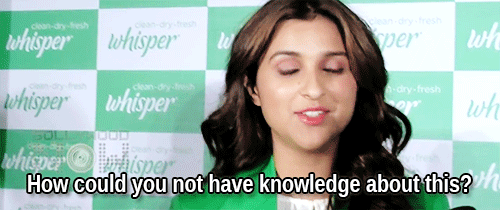

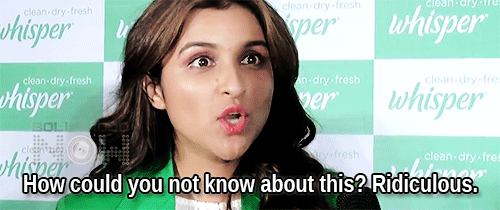

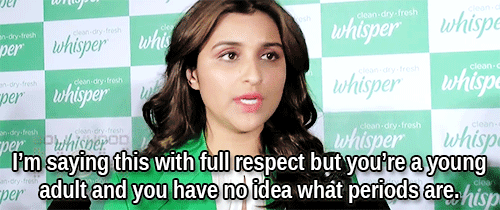
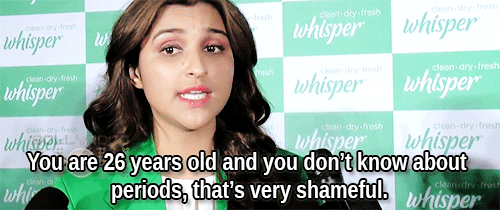
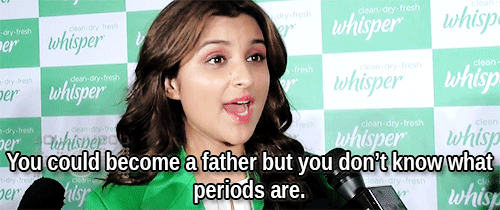
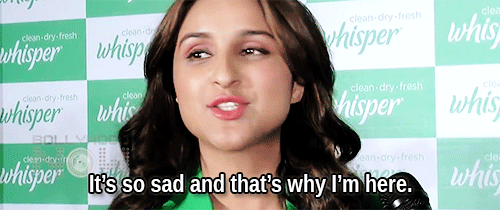
Parineeti Chopra responds to a male reporter who claims to know nothing about periods (menstrual cycle). [X]
Writing Tip - How To Make Fight Scenes Interesting
More writing tips
So, when it comes to writing fight scenes, as I have done quite a few of them, there's some things I keep in mind.
Ensure Consistent Character Abilities: Characters should fight consistently throughout the scene. They shouldn’t magically become stronger or weaker without a clear reason. Consistency in their abilities helps maintain believability.
Avoid Making Heroes Invincible: I prefer not to portray heroes as invulnerable, as seen in many 80s action movies. Instead, I include moments where the hero gets hit, shows visible injuries, and shows fatigue. This makes them feel more human and improves the significance of their victories. It’s hard to create a sense of urgency if the characters don’t seem to be in real danger.
Portray Antagonists as Competent: I avoid depicting random cannon fodder as foolish by having them attack one at a time or easily get knocked out. Instead, I show them employing smart tactics such as ganging up on the hero and even getting back up after being knocked down.
Incorporate the Environment: Don’t forget to include the surroundings. Whether the fight takes place in a cramped alley, on a rain-soaked rooftop, or in a collapsing building, use the environment creatively. Characters can use objects as weapons, find cover, or struggle against challenging terrain.
Highlight Self-Inflicted Pain: Characters can hurt themselves just as much as their opponents. For instance, after landing a powerful right hook, a character might need to pause and shake off their hand in pain. This not only adds realism but also highlights the toll that fighting takes on the body.
Show Consequences After the Fight: Consider what happens after the battle concludes. Do injuries slow the hero down and limit their abilities for the rest of the story?
These are just a few tips for now. I am planning to release more tips on how I write my fight scenes with some examples included. See you then!
SOUND ON.
-
 high-voltage-rat liked this · 3 weeks ago
high-voltage-rat liked this · 3 weeks ago -
 pixiemusing reblogged this · 3 weeks ago
pixiemusing reblogged this · 3 weeks ago -
 pixiemusing liked this · 3 weeks ago
pixiemusing liked this · 3 weeks ago -
 buglicorice reblogged this · 3 weeks ago
buglicorice reblogged this · 3 weeks ago -
 centauri-proxima liked this · 3 weeks ago
centauri-proxima liked this · 3 weeks ago -
 lilithdemonwife liked this · 3 weeks ago
lilithdemonwife liked this · 3 weeks ago -
 faroresson reblogged this · 3 weeks ago
faroresson reblogged this · 3 weeks ago -
 puppy-caleb reblogged this · 3 weeks ago
puppy-caleb reblogged this · 3 weeks ago -
 silversoulstardust reblogged this · 3 weeks ago
silversoulstardust reblogged this · 3 weeks ago -
 notyoubookmark reblogged this · 3 weeks ago
notyoubookmark reblogged this · 3 weeks ago -
 naneuu reblogged this · 3 weeks ago
naneuu reblogged this · 3 weeks ago -
 naneuu liked this · 3 weeks ago
naneuu liked this · 3 weeks ago -
 flintlockfrenchkisser liked this · 3 weeks ago
flintlockfrenchkisser liked this · 3 weeks ago -
 iotatundra reblogged this · 3 weeks ago
iotatundra reblogged this · 3 weeks ago -
 tgirltitsweat liked this · 3 weeks ago
tgirltitsweat liked this · 3 weeks ago -
 flossthecryptid liked this · 3 weeks ago
flossthecryptid liked this · 3 weeks ago -
 tuesy liked this · 3 weeks ago
tuesy liked this · 3 weeks ago -
 brainsib liked this · 3 weeks ago
brainsib liked this · 3 weeks ago -
 myowncastleonacloud reblogged this · 3 weeks ago
myowncastleonacloud reblogged this · 3 weeks ago -
 joiesmineurs liked this · 3 weeks ago
joiesmineurs liked this · 3 weeks ago -
 jaded8insomnyac liked this · 3 weeks ago
jaded8insomnyac liked this · 3 weeks ago -
 adragonnamedatlas reblogged this · 3 weeks ago
adragonnamedatlas reblogged this · 3 weeks ago -
 adragonnamedatlas liked this · 3 weeks ago
adragonnamedatlas liked this · 3 weeks ago -
 elephants-are-cool liked this · 3 weeks ago
elephants-are-cool liked this · 3 weeks ago -
 strawberryamanita reblogged this · 3 weeks ago
strawberryamanita reblogged this · 3 weeks ago -
 pensivespacepirate reblogged this · 3 weeks ago
pensivespacepirate reblogged this · 3 weeks ago -
 malt-o-meat reblogged this · 3 weeks ago
malt-o-meat reblogged this · 3 weeks ago -
 badpeople reblogged this · 3 weeks ago
badpeople reblogged this · 3 weeks ago -
 malt-o-meat liked this · 3 weeks ago
malt-o-meat liked this · 3 weeks ago -
 thingsiwannareblog reblogged this · 3 weeks ago
thingsiwannareblog reblogged this · 3 weeks ago -
 doctorfurbenstein liked this · 3 weeks ago
doctorfurbenstein liked this · 3 weeks ago -
 formaldehyde--face liked this · 3 weeks ago
formaldehyde--face liked this · 3 weeks ago -
 submissive-dumbass reblogged this · 3 weeks ago
submissive-dumbass reblogged this · 3 weeks ago -
 spiritsd reblogged this · 3 weeks ago
spiritsd reblogged this · 3 weeks ago -
 im-gay-and-mentally-unstable liked this · 3 weeks ago
im-gay-and-mentally-unstable liked this · 3 weeks ago -
 tinybaphomet reblogged this · 3 weeks ago
tinybaphomet reblogged this · 3 weeks ago -
 mmishee-alt liked this · 3 weeks ago
mmishee-alt liked this · 3 weeks ago -
 eclipsedrawsthings reblogged this · 3 weeks ago
eclipsedrawsthings reblogged this · 3 weeks ago -
 stew-is-sus reblogged this · 3 weeks ago
stew-is-sus reblogged this · 3 weeks ago -
 stew-is-sus liked this · 3 weeks ago
stew-is-sus liked this · 3 weeks ago -
 laminatednewspaper liked this · 3 weeks ago
laminatednewspaper liked this · 3 weeks ago -
 puppy-the-mask liked this · 3 weeks ago
puppy-the-mask liked this · 3 weeks ago -
 neogale reblogged this · 3 weeks ago
neogale reblogged this · 3 weeks ago -
 rabaukenaction reblogged this · 3 weeks ago
rabaukenaction reblogged this · 3 weeks ago -
 witcherbatard reblogged this · 3 weeks ago
witcherbatard reblogged this · 3 weeks ago -
 kamikazequail reblogged this · 3 weeks ago
kamikazequail reblogged this · 3 weeks ago -
 a1rc0n liked this · 3 weeks ago
a1rc0n liked this · 3 weeks ago -
 thordis-red liked this · 3 weeks ago
thordis-red liked this · 3 weeks ago -
 chaosdoesnotdefineme reblogged this · 3 weeks ago
chaosdoesnotdefineme reblogged this · 3 weeks ago -
 chaosdoesnotdefineme liked this · 3 weeks ago
chaosdoesnotdefineme liked this · 3 weeks ago
